#CalligraphyBasics
Explore tagged Tumblr posts
Text
Calligraphy Guideline Basics: Line Perfection Starts Here
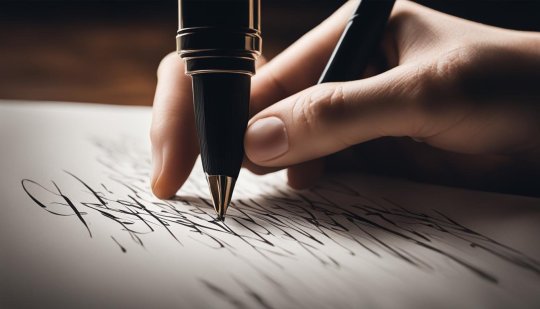
Calligraphy Guideline Basics: Master Line Perfection Instantly
Welcome to our comprehensive guide on calligraphy guideline basics. In this section, we will explore the fundamental concepts you need to know to achieve line perfection in calligraphy. Understanding calligraphy guidelines is essential for creating beautiful letterforms and developing your skills as a calligraphy artist. Before we dive into the details, let's take a moment to appreciate the artistry of calligraphy. Calligraphy is a timeless form of writing that combines artistic expression with precise lettering. It has been practiced for centuries and is celebrated for its elegance and beauty. Now, let's get started with the basics. Calligraphy guidelines provide the structure and framework for your letterforms. They act as a guide to help you maintain consistent letter heights, spacing, and proportions. By following these guidelines, you can achieve the desired line perfection that is characteristic of beautiful calligraphy. Throughout this guide, we will cover everything from understanding basic calligraphy strokes and practicing like a pro to choosing the right tools and overcoming common challenges. Whether you're a beginner or looking to enhance your existing skills, this guide will provide you with the knowledge and resources to succeed in the art of calligraphy. Key Takeaways: - Calligraphy guidelines are essential for achieving line perfection. - Understanding basic calligraphy strokes is crucial for creating cohesive letterforms. - Practicing calligraphy with the right tools and techniques is the key to improving your skills. - Differentiating between modern calligraphy and hand lettering allows for personal expression. - Overcoming common calligraphy challenges requires consistency and creativity.
Understanding Basic Calligraphy Strokes
Mastering basic calligraphy strokes is essential for beginners to develop their skills and create beautiful letterforms. These strokes serve as the building blocks for lowercase letters in calligraphy and form the foundation of the art. By understanding and practicing these strokes, you can achieve consistency and precision in your work. There are four main basic calligraphy strokes that you need to familiarize yourself with: - Downstroke: This is a vertical stroke that is thick and bold. It is created by applying pressure when moving the pen downwards. - Upstroke: This is a thin and light stroke that is created by moving the pen upwards without applying pressure. - Underturn: This stroke is curved and transitions smoothly from a thin to a thick line. It is commonly used in letters like "a", "d", and "g". - Overturn: This stroke is also curved but transitions from a thick to a thin line. It is commonly used in letters like "b", "p", and "o". By practicing these strokes individually and combining them in different ways, you can create a wide variety of letterforms and develop your own unique calligraphy style. Remember to start with light pressure and gradually increase it to achieve the desired thickness in your downstrokes. Consistency and practice are key to mastering basic calligraphy strokes and improving your overall technique. Stroke Type Examples Downstroke h, k, t Upstroke i, j, l Underturn a, d, g Overturn b, p, o Practice these basic calligraphy strokes regularly, focusing on achieving consistency and control. Experiment with different pressures and angles to create unique variations in your letterforms. By mastering these strokes, you will build a strong foundation for further exploration and experimentation in the world of calligraphy.
Practicing Calligraphy Like a Pro
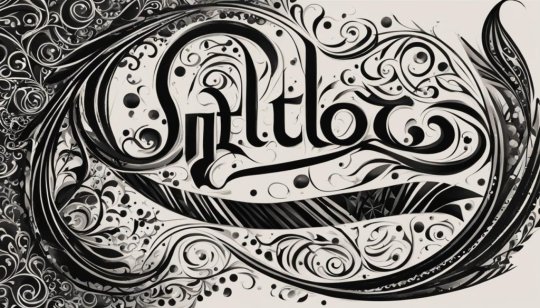
Are you ready to dive into the world of calligraphy? Starting a new artistic journey can be both exciting and intimidating, but with the right tips and techniques, you can practice calligraphy like a pro. In this section, we will guide you through the steps to get started and provide valuable insights to improve your calligraphy skills. Understanding the Difference: Calligraphy vs. Cursive Writing Before we delve into the techniques, let's clarify the difference between calligraphy and cursive writing. While cursive writing aims for speed and legibility, calligraphy is an art form that focuses on creating beautiful and expressive letterforms. In calligraphy, each stroke is intentional and deliberate, making it crucial to practice each stroke individually to achieve precision and consistency. To start your calligraphy journey, you will need some essential tools and materials. The most common tools include calligraphy pens, brush pens, ink, and paper. It's important to choose high-quality materials that suit your personal preferences and style. Additionally, practicing on calligraphy-specific paper or using practice sheets can help you develop better control and muscle memory. Practicing the Basic Strokes Now that you have your tools ready, it's time to practice the basic strokes. These strokes form the foundation for creating various letterforms. Start by mastering essential strokes such as the upward stroke, downward stroke, and curve. Practice each stroke individually, focusing on consistency and line weight. As you become more comfortable, you can move on to combining the strokes to create different letters. Remember, practice is key to improving your calligraphy skills. Dedicate regular time to practice and experiment with different styles and techniques. By following these tips and putting in the effort, you'll be well on your way to becoming a calligraphy pro!
Choosing the Right Calligraphy Tools
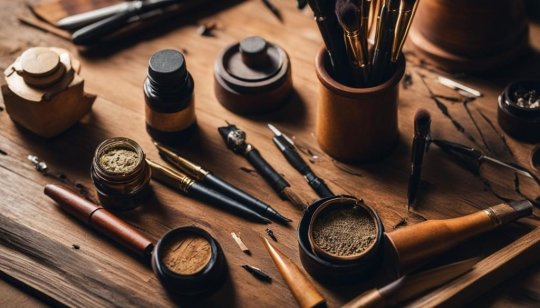
When it comes to calligraphy, selecting the right tools is crucial for achieving the desired results. Whether you're a beginner or an experienced calligrapher, having the right calligraphy pens and brush pens can make all the difference in your writing. Here, we will guide you on how to choose the perfect tools for your calligraphy journey. Calligraphy Pens Calligraphy pens come in various types, each offering unique features and effects. The two most common types are dip pens and fountain pens. Dip pens require a separate nib, which is dipped into ink, allowing for more control and customization in your strokes. Fountain pens, on the other hand, have an internal reservoir that holds the ink, providing a smoother writing experience. When choosing a calligraphy pen, consider factors like nib size, material, and flexibility to find the one that suits your style and comfort. Brush Pens Brush pens are a versatile tool for calligraphy, especially for creating bold and expressive lettering. They consist of a brush-like tip that mimics the effects of a traditional brush and ink. Brush pens are available in different sizes and stiffness levels, allowing for variation in stroke widths. They are perfect for both beginners and experienced calligraphers looking to add flair and dynamism to their writing. Experiment with different brush pens to find the one that best suits your desired style and level of control. Calligraphy Practice Sheets Practice sheets are essential for honing your calligraphy skills and improving your technique. These sheets provide guidelines for practicing different strokes, letterforms, and letter combinations. They help develop muscle memory and consistency in your writing. Additionally, practice sheets often include exercises to improve letter spacing, slant, and overall composition. Look for practice sheets that cater to your preferred calligraphy style, whether it's traditional, modern, or a specific script. Regular practice using these sheets will significantly enhance your calligraphy skills over time. Remember, choosing the right calligraphy tools is a personal preference, so don't be afraid to explore different options and experiment with various pens and brush pens. Additionally, dedicated practice using practice sheets will help you develop muscle memory and improve your overall calligraphy technique. With the right tools and regular practice, you'll be well on your way to creating beautiful, artistic lettering.
The Difference between Modern Calligraphy and Hand Lettering
If you're new to the world of calligraphy, you may have come across two terms that are often used interchangeably: modern calligraphy and hand lettering. While they share similarities, there are distinct differences between the two styles. Modern calligraphy is a contemporary take on traditional calligraphy. It embraces the foundational principles of calligraphy but allows for more freedom and personal expression. Modern calligraphy often incorporates elements of various lettering styles, creating a unique and artistic approach to letterforms. Hand lettering, on the other hand, refers to the art of drawing letters by hand. It encompasses a wide range of styles, including but not limited to calligraphy. Hand lettering allows for more flexibility in design and can incorporate embellishments, illustrations, and other graphic elements to enhance the overall composition. While modern calligraphy focuses on the beauty of letterforms and the rhythm of strokes, hand lettering expands beyond the realm of traditional writing and explores the integration of typography and illustration. Both styles offer endless possibilities for creativity and self-expression, making them popular choices among artists, designers, and those seeking to add a personal touch to their projects. Examples of Modern Calligraphy and Hand Lettering To further illustrate the distinction between modern calligraphy and hand lettering, here are some examples: "The art of modern calligraphy celebrates the elegance of letterforms through fluid and deliberate strokes. It combines the precision of traditional calligraphy with a contemporary twist." "Hand lettering is a form of artistic expression that allows for the creation of unique letterforms through illustrative elements and stylized typography. It invites experimentation and encourages the blending of different artistic mediums." Modern Calligraphy Hand Lettering Focuses on the beauty of letterforms Explores integration of typography and illustration Uses traditional calligraphy tools Allows for various artistic mediums Emphasizes precision and rhythm of strokes Encourages creativity and experimentation By understanding the difference between modern calligraphy and hand lettering, you can choose the style that best suits your creative vision and brings your ideas to life.
Overcoming Common Calligraphy Challenges
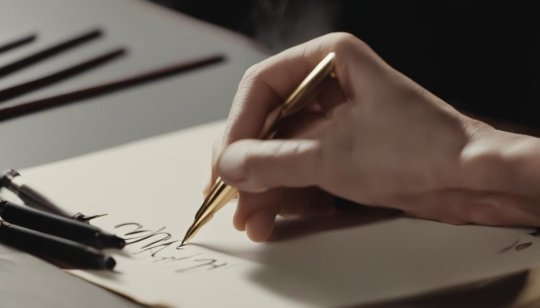
Improving your calligraphy skills can be both exciting and challenging. As you strive for consistency in your letterforms and aim to create beautiful pieces of art, you may encounter some common obstacles along the way. In this section, we will address these challenges and provide you with valuable tips and techniques to help you overcome them. Challenge 1: Achieving Consistency in Letterforms Consistency is key in calligraphy, and it can be a struggle to maintain uniformity in your strokes and letter shapes. To overcome this challenge, practice regularly and focus on mastering the basic calligraphy strokes. Pay attention to the angle and pressure of your pen or brush and strive for evenness in each stroke. Using guidelines or grids can also be helpful in achieving consistent letterforms. Challenge 2: Improving Overall Skill and Technique Calligraphy is a skill that requires constant improvement and refinement. To enhance your calligraphy technique, dedicate time to deliberate practice. Focus on specific aspects of your strokes and letterforms that need improvement and work on them systematically. Study the work of experienced calligraphers for inspiration and guidance, and don't be afraid to experiment with different styles and techniques to find your unique voice. Challenge 3: Finding Inspiration and Creativity in Calligraphy Calligraphy is not just about mastering the technical aspects; it's also about expressing your creativity and connecting with your artistic side. If you find yourself lacking inspiration, try exploring different calligraphy styles and experimenting with various tools and materials. Look for inspiration outside of calligraphy as well, such as nature, art, or literature. Remember that calligraphy is a journey, and finding your own creative path may take time and exploration. In conclusion, overcoming common calligraphy challenges is part of the learning process and an opportunity for growth. Embrace the journey, be patient with yourself, and continue to practice and improve. With dedication and perseverance, you will develop your calligraphy skills and create beautiful, expressive pieces of art.
History of Basic Calligraphy Strokes
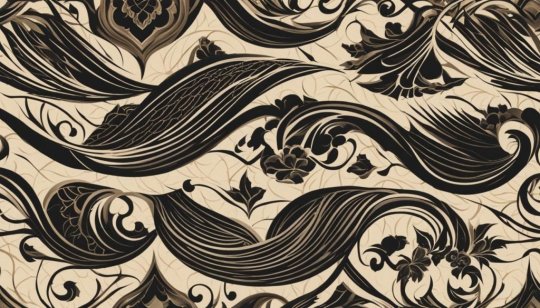
In this section, we will explore the fascinating history and evolution of basic calligraphy strokes. Understanding the origins of these strokes will provide valuable insights into the art form and enhance your appreciation for the techniques used in calligraphy today. Calligraphy has a rich history that dates back centuries. It has been practiced in various forms and styles across different cultures, each contributing to the development and refinement of calligraphy strokes. From the elegant brushstrokes of Chinese calligraphy to the precise penmanship of Western calligraphy, the evolution of these strokes showcases the creativity and skill of calligraphers throughout history. Throughout the ages, calligraphy strokes have been influenced by cultural, social, and artistic movements. Different regions and time periods have contributed their unique styles and techniques, resulting in a diverse range of calligraphy strokes. Additionally, the terminology used to describe these strokes has evolved over time, reflecting the changing understanding and appreciation of calligraphy as an art form. The Evolution of Calligraphy Strokes To better understand the history of calligraphy strokes, it's important to examine the key milestones and influences that have shaped their evolution. Here are some notable examples: Time Period Region Influence Ancient China China The development of brush calligraphy and the use of distinct brushstrokes for different characters. Islamic Golden Age Middle East Arabic calligraphy, characterized by fluid and intricate strokes, became highly regarded for its aesthetic and religious significance. Medieval Europe Europe The Gothic script, with its elaborate and ornamental strokes, gained popularity in manuscripts and religious texts. Japanese Edo Period Japan Japanese calligraphy, known as shodo, adopted its distinctive strokes and techniques influenced by Chinese calligraphy. By exploring the history of calligraphy strokes and the cultural contexts in which they emerged, we can gain a deeper understanding of the art form and find inspiration in the techniques of calligraphers of the past. "Calligraphy strokes have a rich and varied history, with each stroke holding cultural significance and artistic expression. By studying the evolution of calligraphy strokes, we can engage with the traditions of ancient civilizations and appreciate the timeless beauty of this art form." - Calligraphy Master
Practicing Calligraphy with Pencil and Paper
https://www.youtube.com/watch?v=kRZ3-rtXpDQ If you're a beginner looking to explore the art of calligraphy, practicing with pencil and paper can be a great way to start. This method offers accessibility and affordability, allowing you to hone your skills without investing in specialized tools. In this section, we will guide you through the process of practicing calligraphy with pencil and paper, providing tips and techniques to help you get started. Basic Calligraphy Supplies Before we dive into the practice techniques, let's take a look at the basic calligraphy supplies you'll need: - A pencil with a smooth lead - preferably an HB or 2B pencil - A calligraphy guideline sheet or a ruler to create your own guidelines - A smooth and high-quality paper, such as Bristol board or calligraphy practice paper - An eraser to correct any mistakes or smudges The Right Pencil Grip The correct pencil grip is crucial for achieving control and precision in your calligraphy strokes. Here are some tips to help you establish a proper grip: - Hold the pencil lightly between your thumb, index, and middle fingers. - Angle the pencil at a comfortable slant, allowing for smooth movement. - Keep your wrist loose and relaxed to avoid tension. - Practice writing short strokes and gradually build up to longer strokes. By practicing calligraphy with pencil and paper, you can develop a solid foundation for your letterforms and gain a better understanding of stroke consistency and control. Remember to be patient with yourself and practice regularly to improve your skills. With dedication and practice, you'll soon be creating beautiful calligraphy pieces using a variety of tools.
Brush Pen Calligraphy for Beginners
If you're looking to dive into the world of calligraphy but prefer a more versatile and beginner-friendly tool, brush pens are an excellent choice. These pens combine the ease of use of a marker with the ability to create beautiful brush-like strokes. Whether you're a complete beginner or have some experience with calligraphy, brush pens offer endless possibilities for creativity. When it comes to brush pen calligraphy, choosing the right pen is crucial. There are various types of brush pens available, each with its own unique characteristics. Some pens have a flexible brush tip that allows you to create both thick and thin strokes effortlessly, while others have a firmer tip that provides more control. Experiment with different pens to find the one that suits your style and preferences. Once you have your brush pen, it's time to explore different techniques to create gorgeous letterforms. Brush pen calligraphy offers the opportunity to experiment with variations in pressure, angle, and speed to achieve different effects. Practice creating thick downstrokes and delicate upstrokes, and experiment with letter spacing to add your personal touch to your calligraphy. Remember, practice is key when it comes to brush pen calligraphy. Set aside regular time to practice various letterforms, words, and phrases. You can find printable practice sheets online or create your own. As you gain confidence and proficiency, you'll be able to explore more advanced techniques and develop your unique style in brush pen calligraphy.
The Art of Pressure Control in Calligraphy
In the world of calligraphy, mastering the art of pressure control is crucial for achieving beautiful and balanced letterforms. Understanding how to apply the right amount of pressure to your pen or brush is what creates those elegant thick and thin strokes that bring your calligraphy to life. Read the full article
0 notes
Text
After a month of not doing any work, my hands are forgetting the strokes and it will surely take months of constant practice to achieve it again.
1 note
·
View note
Video
Here’s a fun little video of traditional calligraphy! I learnt this style of calligraphy when I was in 4th and 5th grade and writing with these pens always reminds me of those days! #traditionalcalligraphy #calligraphy #calligraphylettering #calligraphyvideo #calligraphylove #calligraphypractice #calligraphydaily #calligraphyartist #calligraphycommunity #calligraphyaddict #calligraphybasics #moderngothiccalligraphy #calligraphyquote #calligraphyinspired #bujoquotes #bujoquotespread #journaling #quotestoinspire https://www.instagram.com/p/CSuxxFVKS5u/?utm_medium=tumblr
#traditionalcalligraphy#calligraphy#calligraphylettering#calligraphyvideo#calligraphylove#calligraphypractice#calligraphydaily#calligraphyartist#calligraphycommunity#calligraphyaddict#calligraphybasics#moderngothiccalligraphy#calligraphyquote#calligraphyinspired#bujoquotes#bujoquotespread#journaling#quotestoinspire
1 note
·
View note
Photo
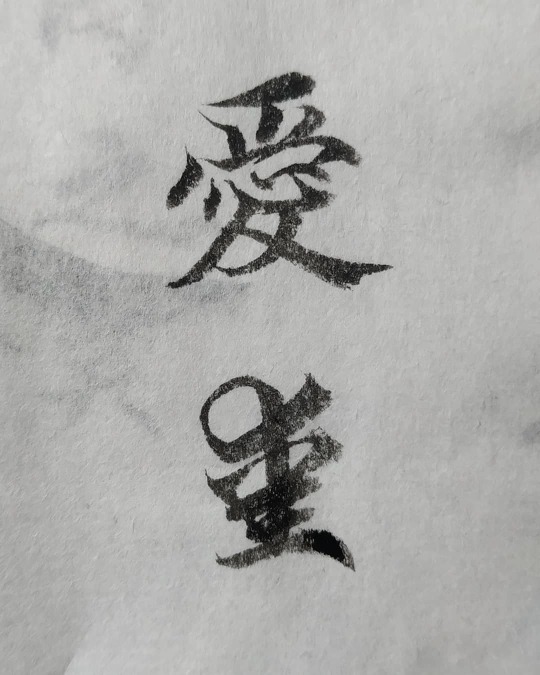
#爱 #愛 mean #love. here is its #regularscript(up) and #cursivescript(down) #loveyou #loveyourself #lovequotes #loveislove #calligraphyquotes #calligraphybasics #calligraphybeginner #calligraphy_daily #calligraphy_art #calligraphydesign #calligrapher #calligraphytutorial #calligraph #calligraphytattoo #calligraphy #calligraphyart #calligraphydaily #shodo #chineseart #Chinesecalligraphy #chineseculture #書法 #書法藝術 #書道 #書道作品 https://www.instagram.com/p/CPhU0UPF0y5/?utm_medium=tumblr
#爱#愛#love#regularscript#cursivescript#loveyou#loveyourself#lovequotes#loveislove#calligraphyquotes#calligraphybasics#calligraphybeginner#calligraphy_daily#calligraphy_art#calligraphydesign#calligrapher#calligraphytutorial#calligraph#calligraphytattoo#calligraphy#calligraphyart#calligraphydaily#shodo#chineseart#chinesecalligraphy#chineseculture#書法#書法藝術#書道#書道作品
1 note
·
View note
Photo

Roman and Italic. Italian scripts on a French paper with German brushes and Korean paints by an Indian hand. Global convergence. . . . #calligraphy #moderncalligraphy #brushcalligraphy #calligraphyart #calligraphymasters #calligraphylove #calligraphypractice #calligraphydaily #calligraphyvideo #thecalligraphyhub #calligraphyartist #instacalligraphy #calligraphylover #calligraphyquote #calligraphydesign #calligraphytutorial #calligraphybasics #dailycalligraphy #learncalligraphy #calligraphyworkshop #thedailycalligraphy #customcalligraphy https://www.instagram.com/p/CEYPRsTphAc/?igshid=1r5jqq259pf0t
#calligraphy#moderncalligraphy#brushcalligraphy#calligraphyart#calligraphymasters#calligraphylove#calligraphypractice#calligraphydaily#calligraphyvideo#thecalligraphyhub#calligraphyartist#instacalligraphy#calligraphylover#calligraphyquote#calligraphydesign#calligraphytutorial#calligraphybasics#dailycalligraphy#learncalligraphy#calligraphyworkshop#thedailycalligraphy#customcalligraphy
1 note
·
View note
Photo

Here, marching with an indispensable ego! 🚀 . . . #type #handmade #calligraphy #valiant #valiantskills #letter #letters #blackandwhite #black #saturday #calligraphybasics #calligrapher #lettering #calligraphymasters #thedailytype #calligraphy_art #letters #calligraphy_daily #calligraphymasters #graphicdesigner #flying #graphicdesign #letteringsoul #martinezdeschamps #iamvaliant #valiente #letras #caligrafia #caligrafía #brushes #typedesign #probandoshit https://www.instagram.com/p/B_WVejFgF_2/?igshid=dmny7nfvcxr2
#type#handmade#calligraphy#valiant#valiantskills#letter#letters#blackandwhite#black#saturday#calligraphybasics#calligrapher#lettering#calligraphymasters#thedailytype#calligraphy_art#calligraphy_daily#graphicdesigner#flying#graphicdesign#letteringsoul#martinezdeschamps#iamvaliant#valiente#letras#caligrafia#caligrafía#brushes#typedesign#probandoshit
1 note
·
View note
Photo

//Love the one who isbold enough to fight for you.// 🌻🌻 Quote by @thepacifiedsoulpoetry on a tissue (I love writing on tissues. :3) Using the jewel brush by @kellycreates in Sapphire. . . #calligraphy #calligraphy_art #calligraphy_daily #calligraphymasters #calligraphypractice #calligraphyart #calligraphyph #calligraphylove #calligraphylettering #calligraphyvideo #calligraphyaddict #calligraphycommunity #calligraphynewbie #calligraphyartist #calligraphydaily #grateful #calligraphybeginner #calligraphytattoo #calligraphybasics #calligraphychallenge #calligraphyquote #gracefulabditory #calligraphyinspired #calligraphypen #calligraphygang #calligraphylover #calligraphyquotes #calligraphyvideos #calligraphyhk #calligraphyworkshop DOWNLOAD Hashtag app: @hashtaginspectr https://www.instagram.com/p/B6YR7VpDC-s/?igshid=8y3ken7lavb9
#calligraphy#calligraphy_art#calligraphy_daily#calligraphymasters#calligraphypractice#calligraphyart#calligraphyph#calligraphylove#calligraphylettering#calligraphyvideo#calligraphyaddict#calligraphycommunity#calligraphynewbie#calligraphyartist#calligraphydaily#grateful#calligraphybeginner#calligraphytattoo#calligraphybasics#calligraphychallenge#calligraphyquote#gracefulabditory#calligraphyinspired#calligraphypen#calligraphygang#calligraphylover#calligraphyquotes#calligraphyvideos#calligraphyhk#calligraphyworkshop
4 notes
·
View notes
Photo

Sometimes, you just don't want to deal with people. Lol . . . Mats used: @papemelroti Dotted Notes @pentelsingapore Fude Touch Brush Sign Pen . . . #calligraphy #calligraphybasics #calligraphyquote #dailycalligraphy #calligraquote #calligraphynewbie #calligraphyPH #handlettered #lettering #quotestoliveby #eatsleepandwrite https://www.instagram.com/p/Br7X36qHt61/?utm_source=ig_tumblr_share&igshid=uzpfpkm8lx6k
#calligraphy#calligraphybasics#calligraphyquote#dailycalligraphy#calligraquote#calligraphynewbie#calligraphyph#handlettered#lettering#quotestoliveby#eatsleepandwrite
11 notes
·
View notes
Photo

It’s tome to get cozy 🍁🍂☕️ . . #octoberlove #octoberfirst #octobermood #octoberdays #calligraphypractice #calligraphylove #calligraphydaily #calligraphynewbie #calligraphybasics #calligraphylover #calligraphydesign #calligraphyinspired (w: Lublin Miasto Inspiracji) https://www.instagram.com/p/CjSJGaWs2Af/?igshid=NGJjMDIxMWI=
#octoberlove#octoberfirst#octobermood#octoberdays#calligraphypractice#calligraphylove#calligraphydaily#calligraphynewbie#calligraphybasics#calligraphylover#calligraphydesign#calligraphyinspired
0 notes
Photo
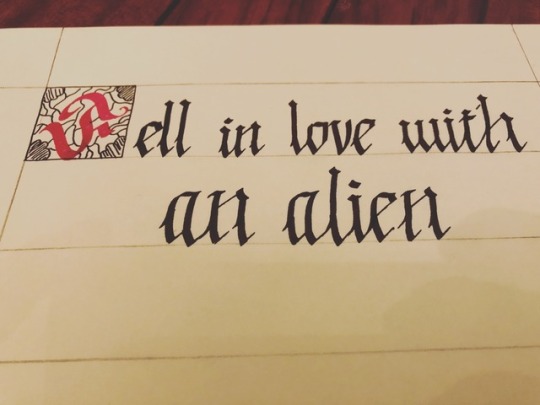
#calligraphy art#calligrafia#calligraphy#calligrapher#calligraphy markers#calligraphybasics#fell in love with an alien
9 notes
·
View notes
Text
Essential Calligraphy Supplies: Must-Haves for Beginners

Essential Calligraphy Supplies: The Complete Guide for Beginners
To start your calligraphy journey, you'll need a few essential calligraphy supplies. These tools are necessary for any calligraphy style and can be purchased without breaking the bank. In this article, we will discuss the key tools you need and provide recommendations based on personal experience. Key Takeaways: - Invest in essential calligraphy tools to begin your calligraphy journey. - Calligraphy pens, ink, paper, and brushes are must-haves for beginners. - Consider the specific requirements of your calligraphy style when choosing pens and ink. - Choose calligraphy paper that is compatible with your tools for optimal results. - Use a ruler and pencil to create guidelines and sketch out your calligraphy layouts.
Calligraphy Pens: Choosing the Right Pen for Your Style

When it comes to calligraphy, the right pen can make all the difference in achieving the desired style and creating beautiful letterforms. With so many options available, choosing the right calligraphy pen can seem overwhelming, especially for beginners. But fear not! This section will guide you through the process of selecting the perfect pen for your calligraphy journey. There are various factors to consider when choosing a calligraphy pen. One of the first things to think about is the style of calligraphy you want to learn. Different pen types are suited for different styles, such as brush pens for brush lettering and dip pens for traditional pointed pen calligraphy. Consider the thickness and flexibility of the nib, as well as the angle of the pen, as these factors will affect the overall look and feel of your lettering. To make the selection process easier, be sure to check out our separate guide on the best calligraphy pens for beginners. It provides detailed recommendations and insights based on personal experience, so you can find the perfect pen to kickstart your calligraphy journey. Key Takeaways: - Choosing the right calligraphy pen is crucial for achieving your desired style. - Consider the style of calligraphy you want to learn and the specific pen requirements for that style. - Factors to consider include nib thickness, flexibility, and pen angle. - Refer to our separate guide on the best calligraphy pens for beginners for detailed recommendations. Calligraphy Pen Type Recommended for Brush pens Brush lettering, modern calligraphy Dip pens Traditional pointed pen calligraphy Italic pens Italic calligraphy, formal scripts Parallel pens Consistent line widths, beginner-friendly Remember, the key to finding the perfect calligraphy pen is to experiment and practice with different options. Each pen has its unique characteristics and will feel different in your hand. Embrace the journey and enjoy the process of discovering your favorite calligraphy pen!
Calligraphy Paper: Finding the Perfect Surface to Write On

When it comes to calligraphy, the right paper can make a world of difference in the quality of your lettering. Not all papers are created equal, and choosing the right one can greatly enhance your calligraphy experience. The key is to find a paper that is compatible with your calligraphy tools, such as pens and inks. For daily practice, it's recommended to use practice papers like Canson Marker paper or Rhodia dot pad. These papers have a smooth surface that allows your pen to glide effortlessly, making it easier to achieve clean, crisp lines. Plus, they are affordable and come in various sizes, so you can practice anywhere, anytime. On the other hand, for your final artwork or special projects, it's best to invest in high-quality papers like Canson watercolor paper or Khadi handmade cotton paper. These papers are thicker and more durable, giving your artwork a professional look and feel. They also have a higher absorbency, allowing the ink to dry quickly and preventing smudging. Types of Calligraphy Paper Characteristics Practice papers (e.g., Canson Marker paper, Rhodia dot pad) Smooth surface, affordable, suitable for daily practice High-quality papers (e.g., Canson watercolor paper, Khadi handmade cotton paper) Thicker, more durable, suitable for final artwork Remember to consider the weight of the paper as well. Heavier papers tend to be more resistant to bleed-through and can handle multiple layers of ink. However, if you prefer a lighter paper, make sure to test it with your tools before committing to a project. In conclusion, finding the perfect calligraphy paper is essential for achieving beautiful lettering. Whether you're practicing your strokes or working on a masterpiece, the right paper will allow your pen to glide smoothly and enhance the overall look of your calligraphy. So take your time to explore different options and invest in high-quality papers that suit your style and needs. Expert Tip: Test Before You Commit "Before starting a new project, it's always a good idea to test your calligraphy tools on a small piece of the paper you plan to use. This way, you can see how the ink behaves on the surface and ensure that there is no bleeding or feathering. It will save you from any potential mishaps and give you the confidence to create with ease."
Ruler: Creating Calligraphy Guidelines with Precision

A ruler is an essential tool for calligraphers as it allows them to create precise guidelines, ensuring consistency in the size and shape of their letters. Whether you're a beginner or an experienced calligrapher, using a ruler can greatly improve the overall quality of your work. When choosing a ruler for calligraphy, consider opting for a rolling ruler. This type of ruler is equipped with a built-in mini protractor, making it easy to determine angles and create parallel lines. It provides the necessary precision for creating guidelines with accuracy and efficiency. If a rolling ruler is not available, you can still achieve excellent results using a regular ruler or a t-square ruler. While these options may require a bit more manual effort, they can still be effective in creating guidelines and layouts in calligraphy. Remember, the key to successful calligraphy lies in the details, and a ruler is the tool that can help you achieve those precise guidelines that are vital for maintaining consistency in your lettering. Table: Comparison of Ruler Options Ruler Type Features Benefits Rolling Ruler Built-in mini protractor, ability to create straight parallel lines Efficient creation of guidelines, precision in determining angles Regular Ruler Straight edge, standard measurements Cost-effective option, widely available T-Square Ruler Perpendicular edge, ideal for creating guidelines Stability and accuracy in creating parallel lines With the right ruler in hand, you can confidently create calligraphy guidelines that enhance the beauty and consistency of your lettering. Take the time to experiment with different ruler options and find the one that suits your needs and preferences best. Incorporating a ruler into your calligraphy practice will ensure that your work is precise and visually appealing.
Pencil: Versatile Tool for Guidelines and Sketching
A pencil is a versatile tool that plays a crucial role in calligraphy. Whether you're a beginner or an experienced calligrapher, a pencil is essential for creating accurate guidelines and exploring different layout ideas. With its ability to be easily erased, a pencil allows you to make adjustments and corrections in your work. When creating calligraphy guidelines, a pencil gives you the freedom to experiment without the fear of permanent marks. By using a pencil to lightly sketch out the guidelines, you can ensure that your letterforms are consistent in size and shape. This process helps you maintain precision and achieve the desired aesthetic in your calligraphy. Additionally, a pencil is also useful for thumbnail sketching in calligraphy. Through quick sketches, you can explore various layout ideas and compositions before committing to a final design. This technique allows you to visualize your calligraphy and make informed decisions about the arrangement of your letterforms. In summary, the pencil is a versatile tool that aids in creating calligraphy guidelines and exploring different layout ideas. Its erasable nature gives you the freedom to make adjustments and corrections as you refine your lettering. Whether you're a beginner or an experienced calligrapher, a pencil is an essential tool that should be part of your calligraphy supplies.
Eraser: Perfect for Correcting Mistakes in Calligraphy

When it comes to calligraphy, mistakes happen to even the most skilled artists. That's where a trusty eraser comes in handy. An essential tool in your calligraphy arsenal, the eraser allows you to correct any errors or make adjustments to your work with ease. One popular choice among calligraphers is the kneaded eraser. This soft and moldable eraser leaves no residue behind, ensuring a clean and smudge-free result. Its pliable nature makes it perfect for shaping into small points or edges, allowing for precise erasing in tight spaces. Whether you're new to calligraphy or a seasoned pro, a kneaded eraser is a must-have item in your collection. It provides the flexibility and control needed to fix any mistakes and achieve flawless letterforms. So, don't forget to add this versatile tool to your calligraphy supply list. Table: Comparison of Erasers for Calligraphy Erasers Advantages Disadvantages Kneaded eraser - Soft and moldable - Can leave behind small residue Vinyl eraser - Erases cleanly - May smudge graphite or ink Plastic eraser - Durable and long-lasting - Can damage paper if too rough "A good eraser is like a magic wand for calligraphers. It allows us to fix our mistakes and turn them into masterpieces." - Calligraphy enthusiast
Calligraphy Inks: Adding Vibrancy to Your Lettering
https://www.youtube.com/watch?v=GLZp2Os1py4 Calligraphy inks are a crucial component of creating vibrant and beautiful lettering. The right choice of ink can bring your calligraphy to life and add a unique touch to your artwork. Whether you prefer black inks for classic elegance or colored inks to showcase your creativity, there is a wide range of options available to suit your preferences. Gouache is a popular choice among calligraphers due to its versatility. It is an opaque watercolor paint that comes in a range of colors and can be easily diluted with water to achieve varying levels of transparency. Gouache allows you to experiment with different shades and create stunning effects in your lettering. For those who prefer traditional black inks, there are various options to consider. Sumi ink is a popular choice in Asian calligraphy, known for its deep black hue and smooth flow. Winsor & Newton calligraphy ink and Speedball super black calligraphy ink are also highly regarded for their rich color and consistent performance. Ink Type Description Gouache An opaque watercolor paint available in various colors. Can be diluted with water. Sumi Ink A traditional black ink used in Asian calligraphy. Offers a deep black hue and smooth flow. Winsor & Newton Calligraphy Ink High-quality black ink with a rich color and consistent performance. Speedball Super Black Calligraphy Ink A favored choice among calligraphers for its intense black color and smooth consistency. When selecting calligraphy inks, it's essential to choose those that work well with your preferred tools and paper. It's recommended to experiment with different inks and find the ones that complement your style and enhance your lettering. By exploring various inks, you can unleash your creativity and create stunning calligraphy pieces that truly stand out.
Additional Calligraphy Supplies to Consider
While not essential, there are several additional calligraphy supplies that can enhance your lettering experience. These include a light box, high-quality handmade paper, white and metallic inks, a sketchbook, the Brause EF66 nib, and a parallel glider. Let's take a closer look at each of these supplies: 1. Light Box A light box is a useful tool for calligraphers, especially when working on light-colored papers. It allows you to shine guidelines through the paper, making it easier to maintain consistency in your lettering. When selecting a light box, look for one with adjustable brightness levels and a large enough surface area to accommodate your paper size. 2. High-Quality Handmade Paper Investing in high-quality handmade paper can elevate your calligraphy projects. Handmade papers have unique textures and fibers that add character to your lettering. Look for papers specifically designed for calligraphy, such as cotton or vellum papers, as they can handle ink without bleeding or feathering. 3. White and Metallic Inks White and metallic inks are fantastic for creating eye-catching effects in your calligraphy. White ink can be used to add highlights, create contrast, or write on dark surfaces. Metallic inks come in a variety of colors and can add a touch of elegance and shimmer to your lettering. Experiment with different brands and types to find the inks that suit your style best. 4. Sketchbook A sketchbook is a valuable tool for practicing and exploring different calligraphy styles. It allows you to experiment with layouts, try out new techniques, and jot down ideas for future projects. Look for a sketchbook with smooth, bleed-resistant paper that can handle a variety of inks and pens. 5. Brause EF66 Nib The Brause EF66 nib is known for its bold downstrokes and fine hairline strokes. It's a favorite among calligraphers who want to achieve a dramatic contrast in their lettering. This nib works well with various inks and can produce stunning results when used with proper technique. 6. Parallel Glider A parallel glider is a useful tool for drawing parallel guidelines and perfecting slant lines in your calligraphy. It consists of two rulers that can be adjusted to create consistent spacing and angles. This tool is particularly helpful for calligraphers who want to achieve precise letterforms and layouts. By considering these additional calligraphy supplies, you can expand your creative possibilities and enhance your overall calligraphy experience. Supply Description Light Box A tool for shining guidelines through light-colored papers. High-Quality Handmade Paper Paper specifically designed for calligraphy, with unique textures and fibers. White and Metallic Inks Inks that add highlights, contrast, and elegance to your lettering. Sketchbook A book for practicing and exploring different calligraphy styles. Brause EF66 Nib A nib known for its bold downstrokes and fine hairline strokes. Parallel Glider A tool for drawing parallel guidelines and perfecting slant lines.
Conclusion
As you embark on your calligraphy journey, it's important to have the right tools at your disposal. These essential calligraphy supplies are the building blocks for your beginner calligraphy practice. With calligraphy pens, paper, ruler, pencil, eraser, and inks, you have everything you need to get started. While it's tempting to purchase a premade kit, building your own kit using high-quality tools is recommended. This allows for greater customization and ensures you have materials that will last. Remember, practice is key to developing your calligraphy skills, so make sure to set aside regular time to practice and explore different styles. Whether you're a beginner just starting out or an experienced calligrapher looking to expand your collection, these essential tools will serve you well. So go ahead, grab your calligraphy supplies, and let your creativity flow!
FAQ
What are the essential calligraphy supplies for beginners? The essential calligraphy supplies for beginners include calligraphy pens, paper, ruler, pencil, eraser, and inks. How do I choose the right calligraphy pen? When choosing a calligraphy pen, consider factors like pen angle, nib flexibility, and ink flow. It's recommended to check a separate guide on the best calligraphy pens for beginners for more information and specific recommendations. What type of paper should I use for calligraphy? Different calligraphy tools require different types of paper. For daily practice, consider using practice papers like Canson Marker paper or Rhodia dot pad. For final artworks, high-quality papers like Canson watercolor paper or Khadi handmade cotton paper are best. What is the purpose of a ruler in calligraphy? A ruler is used for creating calligraphy guidelines, which help maintain consistency in the size and shape of your letters. A rolling ruler is a popular choice, but a regular ruler or t-square ruler can also be used effectively for creating guidelines and layouts in calligraphy. How can I use a pencil in calligraphy? Pencils are used for creating calligraphy guidelines and sketching layouts. An HB pencil with a mechanical pencil or regular lead is recommended for creating guidelines and sketches. What type of eraser should I use for calligraphy? Kneaded erasers are commonly used in calligraphy as they are soft, moldable, and leave no residue. A kneaded eraser is recommended for calligraphy purposes. What types of inks can I use for calligraphy? There are various types of inks available for calligraphy, such as Sumi ink, Winsor & Newton calligraphy ink, Speedball super black calligraphy ink, and more. Gouache is also a great alternative, as it comes in a wide range of colors and can be easily diluted with water. Are there any additional calligraphy supplies I should consider? While not essential, additional calligraphy supplies that can enhance your lettering experience include a light box, high-quality handmade paper, white and metallic inks, a sketchbook, the Brause EF66 nib, and a parallel glider. How can I start my calligraphy journey? To start your calligraphy journey, gather the essential supplies mentioned above and ensure you practice regularly. Explore different styles to develop your calligraphy skills and have fun with your creative journey!
Source Links
- https://julieblanner.com/calligraphy-supplies-for-beginners/ - https://www.lettering-daily.com/calligraphy-tools/ - https://thepostmansknock.com/seven-special-treat-calligraphy-supplies/ Read the full article
0 notes
Photo

"It’s leviOsa, not leviosAA! " Yes, I am a potterhead 😁 . . . . #calligraphybasics #calligrabasics #gothiccalligraphy #parallelcalligraphy #pilotparallelpen #parallelpencalligraphy #parallelpen #frakturscript #harrypotter #potterhead #potter headforlife https://www.instagram.com/p/CSPPNJKBV9b/?utm_medium=tumblr
#calligraphybasics#calligrabasics#gothiccalligraphy#parallelcalligraphy#pilotparallelpen#parallelpencalligraphy#parallelpen#frakturscript#harrypotter#potterhead#potter
1 note
·
View note
Photo

#岛 #島 mean #island #regularscript #calligraphybasics #calligraphybeginner #calligraphy_art #calligrapher #calligraphywords #calligraphy #calligraphytattoo #chinesecalligraphytattoo #Chinesecalligraphy #shodo #tattoo #tattoos https://www.instagram.com/p/CSJorYfnm5c/?utm_medium=tumblr
#岛#島#island#regularscript#calligraphybasics#calligraphybeginner#calligraphy_art#calligrapher#calligraphywords#calligraphy#calligraphytattoo#chinesecalligraphytattoo#chinesecalligraphy#shodo#tattoo#tattoos
0 notes
Photo

Faux/Pencil Calligraphy✏️ DM for online class #calligraphyworkshop #calligraphyartist #calligraphylove #calligraphybasics #calligraphypractice #calligraphytutorials #calligraphyquotes #calligraphyteacher #brushpencalligraphy #brushlettering #brushcalligraphy #brushpenlettering #pencilcalligraphy #pencillettering #calligraphyindia #calligraphybasicstrokes #calligraphydaily #calligraphyart #tutorial #brushpenblending #brushpentutorial #thetintedpaper #pointedpencalligraphy #calligram #letteringtutorial #lettering #letteringindia #letteringart #calligraphyonlineclass #onlineclasses (at Kerala India) https://www.instagram.com/p/COApGNlHXu9/?igshid=21axb01a5w6j
#calligraphyworkshop#calligraphyartist#calligraphylove#calligraphybasics#calligraphypractice#calligraphytutorials#calligraphyquotes#calligraphyteacher#brushpencalligraphy#brushlettering#brushcalligraphy#brushpenlettering#pencilcalligraphy#pencillettering#calligraphyindia#calligraphybasicstrokes#calligraphydaily#calligraphyart#tutorial#brushpenblending#brushpentutorial#thetintedpaper#pointedpencalligraphy#calligram#letteringtutorial#lettering#letteringindia#letteringart#calligraphyonlineclass#onlineclasses
0 notes
Photo

Here, marching with an indispensable ego! 🧠 . . . #type #handmade #calligraphy #valiant #valiantskills #letter #letters #blackandwhite #black #saturday #calligraphybasics #calligrapher #lettering #calligraphymasters #thedailytype #calligraphy_art #letters #calligraphy_daily #calligraphymasters #graphicdesigner #flying #graphicdesign #letteringsoul #martinezdeschamps #iamvaliant #valiente #letras #caligrafia #caligrafía #brushes #typedesign #probandoshit (en Cartagena, Colombia) https://www.instagram.com/p/B4eW5GPgcOt/?igshid=1w4unqy974ill
#type#handmade#calligraphy#valiant#valiantskills#letter#letters#blackandwhite#black#saturday#calligraphybasics#calligrapher#lettering#calligraphymasters#thedailytype#calligraphy_art#calligraphy_daily#graphicdesigner#flying#graphicdesign#letteringsoul#martinezdeschamps#iamvaliant#valiente#letras#caligrafia#caligrafía#brushes#typedesign#probandoshit
5 notes
·
View notes
Photo

Just late night therapy.🌙 #theartsylady . . . #lettering #pentelbrushpencalligraphy #moderncalligraphy #calligraphypractice #calligraphylearning #modernletteringpractice #flourishcalligraphy #calligrabasic #calligraphymaster #calligraphybasics #letteringsoul #handletteringlove #handletteringdaily #dailycalligraphypractice #beginnercalligrapher #beginnerlettering #calligrafia #indiancalligraphy #typographylove #brushlettering #brushpenart https://www.instagram.com/p/CMSdhlUFCWx/?igshid=wc5ypm7frukg
#theartsylady#lettering#pentelbrushpencalligraphy#moderncalligraphy#calligraphypractice#calligraphylearning#modernletteringpractice#flourishcalligraphy#calligrabasic#calligraphymaster#calligraphybasics#letteringsoul#handletteringlove#handletteringdaily#dailycalligraphypractice#beginnercalligrapher#beginnerlettering#calligrafia#indiancalligraphy#typographylove#brushlettering#brushpenart
1 note
·
View note